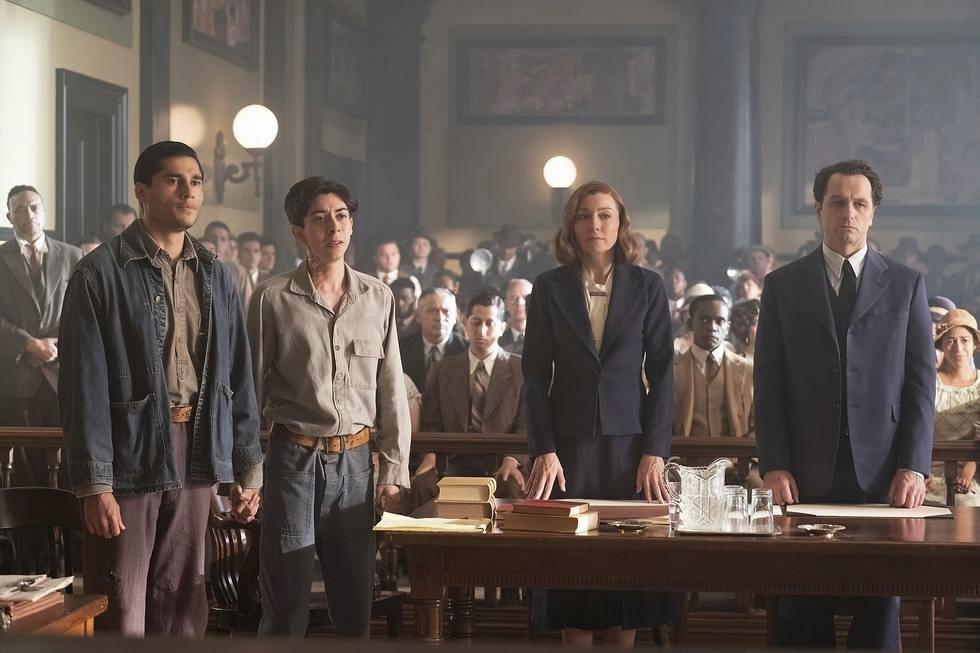Early in the second season finale of “Perry Mason,” which aired Monday, the titular character pulls up on his motorcycle to Los Angeles City Hall and pauses for a long moment. He stares up at the edifice, as if sizing up an opponent, before walking in with hopes to intercede with a judge on behalf of his clients.
Although the scene has no dialogue, the shot of City Hall is pregnant with meaning, almost taunting the maverick lawyer for having the audacity to think he could bring about justice within such a corrupt system.
It’s one of many scenes throughout the Emmy-nominated HBO drama, based on Erle Stanley Gardner’s books and a prequel of sorts to the long-running show starring Raymond Burr, where 1930s Los Angeles is itself a star through the creators’ use of iconic institutions, public landmarks, terrain — and racial and class divisions.
Matthew Rhys, who plays Mason, only became aware of how much attention to detail went into fashioning “LA as that kind of other character” after being “invited to the grown ups’ table” as an executive producer for the second season.
And although the Welsh actor and alum of “The Americans” had previously lived in Los Angeles for six years, he said the experience made him fall in love with the city in new ways.
“They really had to eke out where those little special places were still left in LA that we could shoot. Seeing some of those last kind of hold ons of yesteryear …” he trailed off, smiling as he reminisced about filming at longstanding institutions like Musso & Frank Grill on Hollywood Boulevard. “It was magical.”
Showrunner Michael Begler echoed Rhys’ comments about the production team’s diligence, maintaining that their commitment to understanding LA’s complex history wasn’t superficial, as evidenced by their reliance on a group of historians from the University of Southern California.
“Any question that I’d have, they’d say, ‘Well, did you look into this?’ And then that would send me down, you know, to do a deep dive,” Begler said.
Those questions could be about anything from class tensions and racial segregation to the ways people talked and the shoes they wore, explained historian William Deverell, one of the professors who worked as a consultant on the show.
“Los Angeles was growing with just remarkable velocity,” he said of the Depression-era time period in which the show is set. “The big details are just making sense of a place that kind of exploded into international perspective over a very, very short period of time.”
But in addition to those big details, Deverell said he and the other historians also focused on granular ones about what life in Los Angeles looked like at the time, as many of its residents were relegated to Hoovervilles as a result of the city’s changing economy.
“People are both exhilarated to be here but also trying to figure the place out. And then that chaos also exacerbating all kinds of class and racial tensions,” Deverell said.
One aspect of 1930s Los Angeles that he wanted to ensure was accurately portrayed was its complex racial landscape, particularly as it related to Black communities — in this reimagining of “Perry Mason,” mainstay Paul Drake is a Black LAPD police officer turned private investigator, played by Chris Chalk — and the influx of migrants as a result of the Mexican Revolution.


